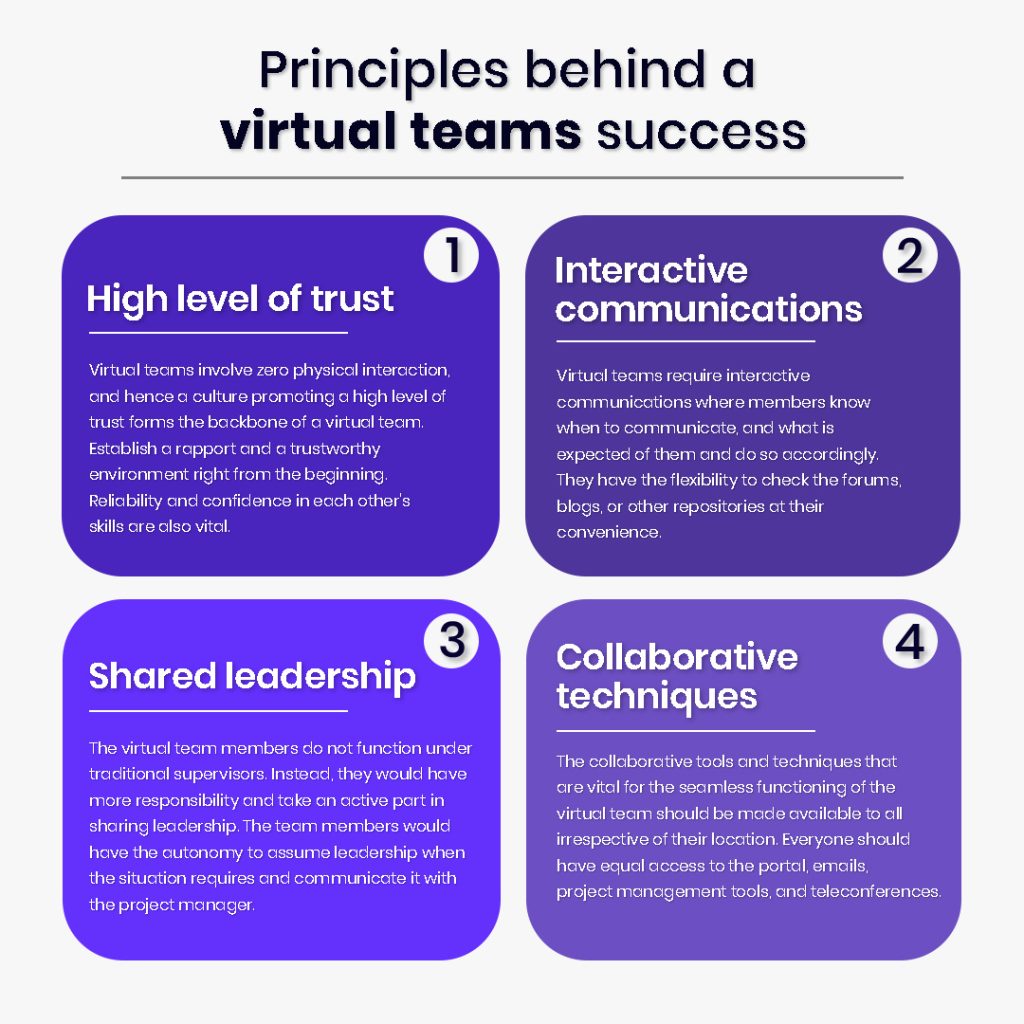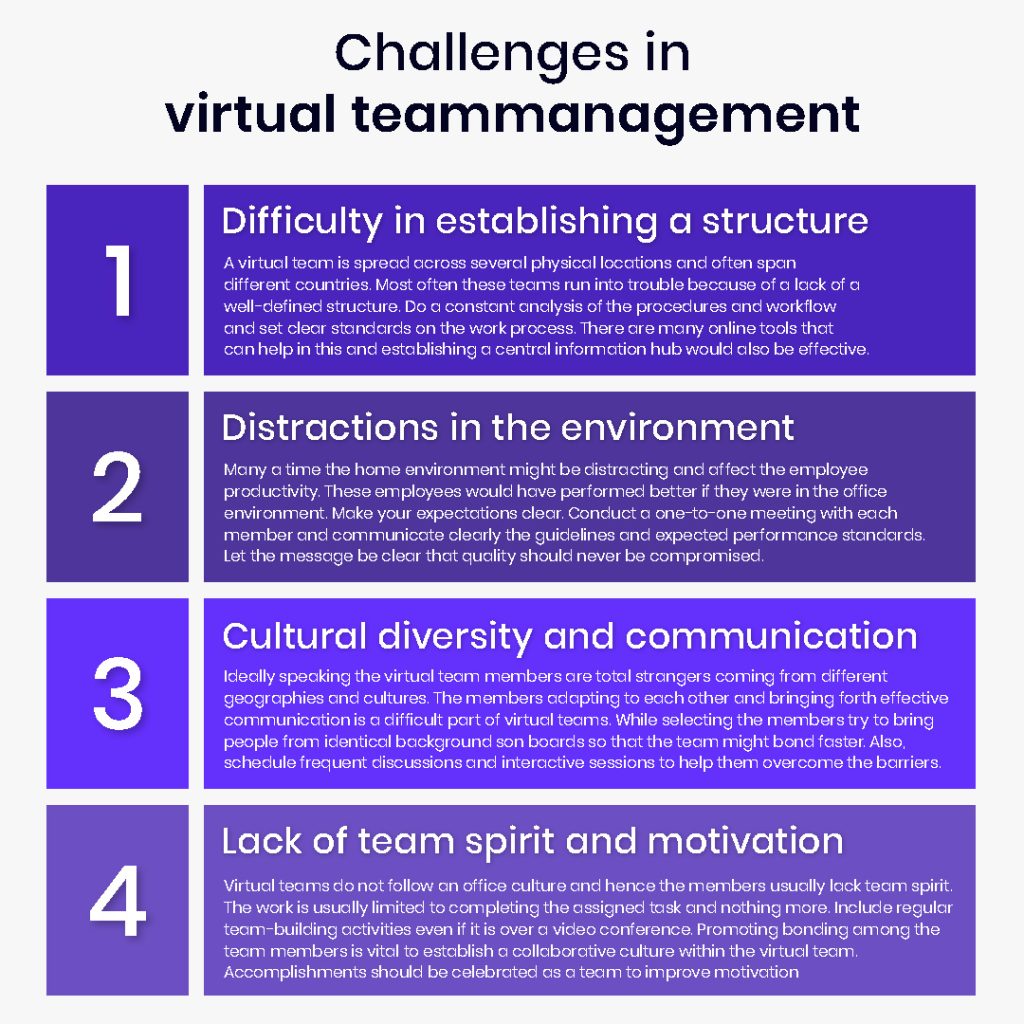
Today’s technology-driven world reminds me of the Greek philosopher Heraclitus and his famous quote “there is nothing permanent except change”. True !!! Just a decade back we were more focused on creating in-house conducive workplaces for employee engagement and now virtual workplaces and artificial intelligence are capturing our attention.
Is the controlled work environment where employees gather to work, report to their supervisors, and leave home after working hours getting outdated? No, they are still the core part of an organization’s successful functioning. But we can see virtual workplaces emerging as necessities for many projects that involve a global workforce or temporary high-skilled experts.
A virtual workplace doesn’t have a physical existence. It connects people and teams from several physical locations using technologies like the internet or private network to collaborate and execute common projects. The absence of face-to-face interaction makes trust and communication vital for the success of virtual teams.
Virtual workplaces are eco-friendly. I’m a big fan of this aspect as it can reduce the commutation of workers and thereby save fuel and reduce carbon emissions. My company focuses on eco-friendly technology and we have successfully digitalized the Himachal Pradesh legislative assembly, a step towards creating an eco-friendly virtual workspace for the government.
Employees would be happy for the money and time saved by not commuting to work. Successful virtual spaces also reduce the huge costs involved in maintaining physical offices. The global workforce can be managed successfully and projects can be managed 24 hours across different time zones. Availability of talent is no longer restricted to the local pool. When employees achieve a better work-life balance they become more productive and responsible as well.
Building a successful virtual team
With many types of virtual teams available to implement for a project, identifying the apt one is important. There are also certain core principles to be incorporated for making it successful.
Types of virtual teams
Networked teams are ideal when a geographically dispersed workforce involving consultants or outside members collaborate on a specific project. The teams are called parallel teams when all members are from within the organization and usually are entrusted with additional responsibilities apart from the primary one of the project. When the aim is to develop a new product, a product or project development team is formed with skilled members from different countries with the specific aim of creating the product.
A work or production team is formed to perform a single task and service companies might form service teams to provide 24 *7 customer support. Action teams are usually formed for a short duration to resolve a specific issue and are dispersed as soon as a solution is identified. Big corporate might find management teams useful to resolve corporate-level strategies. Software companies usually form offshore ISD teams when work is outsourced to countries where labor is cheap.
Principles behind a virtual team’s success

● High level of trust – Virtual teams involve zero physical interaction, and hence a culture promoting a high level of trust forms the backbone of a virtual team. Establish a rapport and a trustworthy environment right from the beginning. Reliability and confidence in each other’s skills are also vital.
● Interactive communications – Virtual teams require interactive communications where members know when to communicate, and what is expected of them and do so accordingly. They have the flexibility to check the forums, blogs, or other repositories at their convenience.
● Shared leadership – The virtual team members do not function under traditional supervisors. Instead, they would have more responsibility and take an active part in sharing leadership. The team members would have the autonomy to assume leadership when the situation requires and communicate it with the project manager.
● Collaborative techniques – The collaborative tools and techniques that are vital for the seamless functioning of the virtual team should be made available to all irrespective of their location. Everyone should have equal access to the portal, emails, project management tools, and teleconferences.
Challenges in virtual workplace management – resolve them with these tips

Successful virtual workplace management might pose a few hurdles that you need to resolve.
● Difficulty in establishing a structure – A virtual team is spread across several physical locations and often spans different countries. Most often these teams run into trouble because of a lack of a well-defined structure.
Do a constant analysis of the procedures and workflow and set clear standards for the work process. There are many online tools that can help with this and establishing a central information hub would also be effective.
● Distractions in the environment – Many a time the home environment might be distracting and affect the employee productivity. These employees would have performed better if they were in the office environment.
Make your expectations clear. Conduct a one-to-one meeting with each member and communicate clearly the guidelines and expected performance standards. Let the message be clear that quality should never be compromised.
● Cultural diversity and communication – Ideally speaking the virtual team members are total strangers coming from different geographies and cultures. The members adapting to each other and bringing forth effective communication is a difficult part of virtual teams.
While selecting the members try to bring people from identical backgrounds on board so that the team might bond faster. Also, schedule frequent discussions and interactive sessions to help them overcome the barriers.
● Lack of team spirit and motivation – Virtual teams do not follow an office culture and hence the members usually lack team spirit. The work is usually limited to completing the assigned task and nothing more.
Include regular team-building activities even if it is over a video conference. Promoting bonding among the team members is vital to establish a collaborative culture within the virtual team. Accomplishments should be celebrated as a team to improve motivation.
Managing a global virtual team
Global virtual teams provide organizations the ability to tap into the global talent pool and also become more responsive to hyper-competitive markets. However, these promising teams are challenging to implement for their spread and diversity.
Cultural differences among the members are always a tough situation to handle. The team manager has to do the required homework on the cultural background of each member to lead the team without any miscommunication. At times language barriers might also pose a challenge. Issues with the accent and poor grasp of English might affect clear communication. Try using translation software to resolve this.
Since the team members belong to different time zones, while scheduling meetings or deadlines the time zone differences should be taken into account. Find common time slots that would be convenient for the majority. The virtual team leader should also focus on building a good rapport and fostering communication among the team members.
The growing need for virtual teams requires a well-laid-out plan in place for any organization to ensure that these invisible teams give productive and visible results.
Follow me on LinkedIn
FAQ
What is artificial intelligence in HRM?
Artificial intelligence in HRM gathers a huge volume of vital human data and processes it to transform the operations of the human resource department.
How AI can be incorporated in HR activities?
AI can be incorporated into recruitment, onboarding, training, and automation of administrative tasks.
Can HR be replaced by artificial intelligence?
HR will not be replaced by artificial intelligence. Rather, AI will enhance the efficiency of human resource functions.
How can automation increase the efficiency of HR functions?
Automation frees the HR department from routine manual tasks and allows the human resource executives to focus on the core activities.
What are the biggest challenges for HR in 2023?
Change management, leadership effectiveness, organizational effectiveness, etc are the biggest challenges for HR in 2023.



